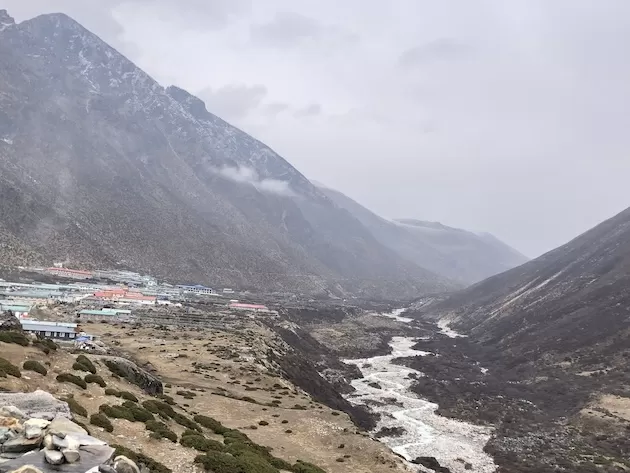Glaciers are often seen as majestic, frozen bodies of water that add to the beauty of the landscape. However, these seemingly peaceful glaciers can also pose a great danger to nearby communities. Glacial Lake Outburst Floods (GLOFs) are a natural phenomenon that occurs when a glacial lake suddenly bursts, causing a massive flood downstream. With climate change causing many of the glaciers in the Hindu Kush Himalaya (HKH) region to shrink, the threat of GLOFs is becoming more imminent. In this explainer, we will take a closer look at GLOFs and the danger they pose to communities in the HKH region.
The HKH region, which spans across eight countries including Afghanistan, Bhutan, China, India, Nepal, Myanmar, Pakistan, and Tajikistan, is home to over 54,000 glaciers. These glaciers are a vital source of water for millions of people, providing water for drinking, irrigation, and hydropower. However, due to rising global temperatures, these glaciers are melting at an alarming rate. In fact, studies have shown that the HKH region is warming at a faster pace than the global average, making it one of the most vulnerable regions to the effects of climate change.
As these glaciers melt, they form glacial lakes, which are bodies of water that are held in place by a natural dam made of ice and debris. However, as the glaciers continue to melt, the water in these lakes can become too much for the natural dam to hold, leading to a sudden and catastrophic release of water. This is known as a Glacial Lake Outburst Flood.
GLOFs are not a new phenomenon, as they have been occurring for centuries. However, with the increasing rate of glacial melt, the frequency and intensity of these floods are also on the rise. In the past few decades, there have been several devastating GLOFs in the HKH region, causing loss of lives, destruction of infrastructure, and displacement of communities.
One of the most significant GLOFs in recent history occurred in 2013 in the Uttarakhand state of India. The Kedarnath GLOF, triggered by heavy rainfall, resulted in a massive flood that killed over 5,000 people and caused widespread damage to the region. This event served as a wake-up call for the Indian government to take action and develop strategies to mitigate the risks of GLOFs.
The danger of GLOFs is not limited to the HKH region. In fact, GLOFs have been reported in other parts of the world, including the Andes, the Alps, and the Rocky Mountains. However, the HKH region is especially vulnerable due to its high concentration of glaciers and the large number of people who rely on these glaciers for their livelihoods.
So, what can be done to mitigate the risks of GLOFs in the HKH region? The first step is to understand the behavior of glaciers and glacial lakes. This requires continuous monitoring and data collection, which can be challenging in remote and rugged mountainous regions. However, with advancements in technology, such as satellite imagery and remote sensing, it has become easier to monitor changes in glaciers and identify potential hazards.
Another crucial step is to develop early warning systems and emergency preparedness plans. These systems can help alert communities downstream in the event of a GLOF, giving them enough time to evacuate and minimize the loss of lives. It is also essential to invest in infrastructure that can withstand the force of a GLOF, such as reinforced bridges and embankments.
But perhaps the most crucial step in mitigating the risks of GLOFs is to address the root cause – climate change. The HKH region is highly vulnerable to the effects of climate change, and urgent action is needed to reduce greenhouse gas emissions and limit global warming. This requires a collective effort from all countries, as the effects of climate change know no boundaries.
In conclusion, GLOFs are a natural phenomenon that can have devastating consequences for communities living in the HKH region. With climate change causing glaciers to melt at an alarming rate, the threat of GLOFs is becoming more imminent. It is crucial for governments and communities to work together to develop strategies to mitigate the risks of GLOFs and address the root cause of climate change. Let us all do our part in protecting our planet and the communities that call it home.



